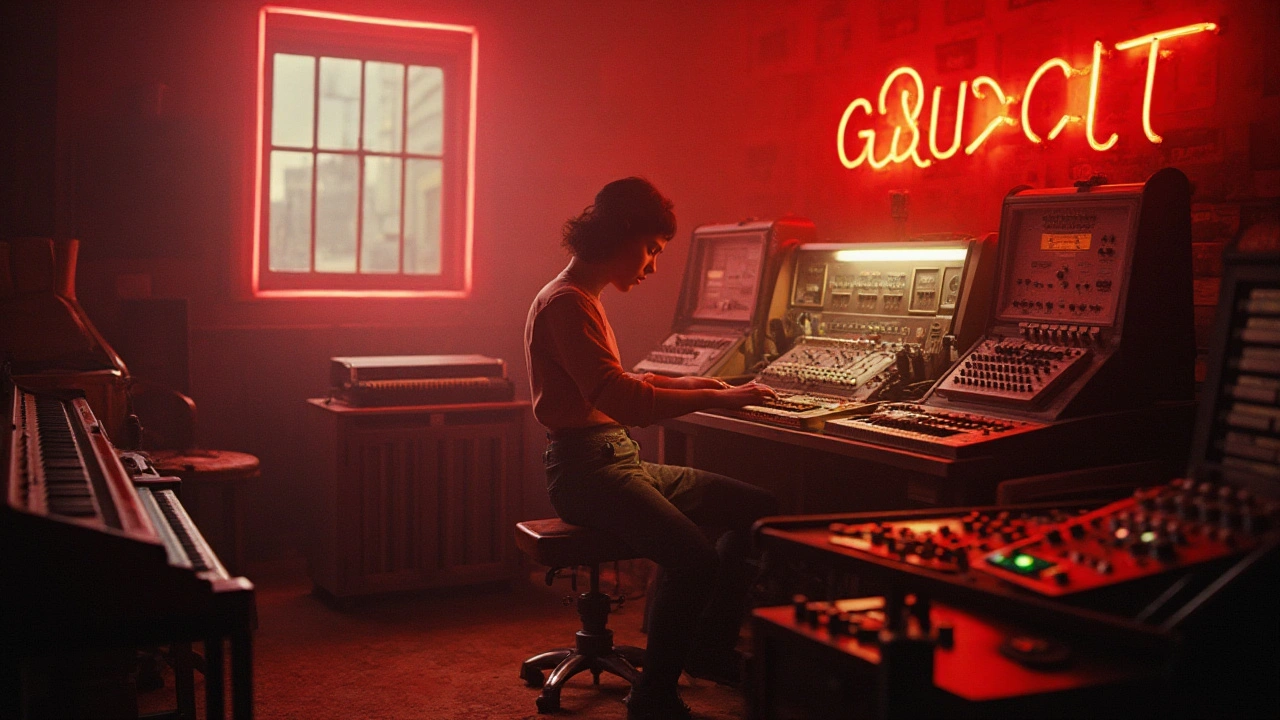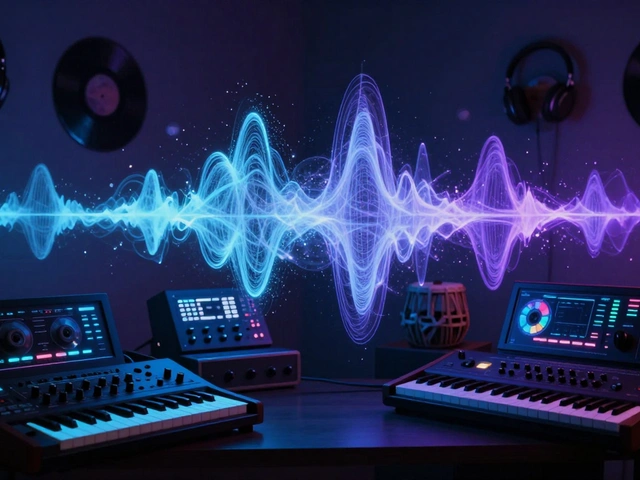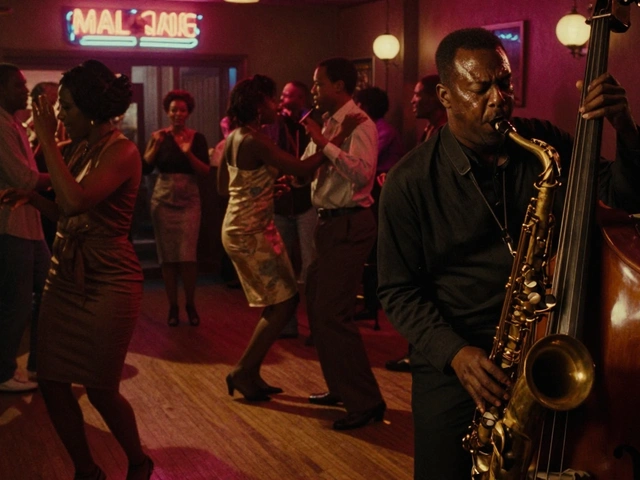Electronic music, a genre often aligned with cutting-edge innovation, has consistently challenged the conventions of sound. Its roots stretch back to the experimentation with circuit boards and oscillators, leading to a ripple effect in the realm of audio technology. These pioneering efforts gave birth to some of the most recognizable sounds and tools in music today.
The transformative journey of electronic music is reflected in its ability to adapt and incorporate new technological advances. The introduction of synthesizers opened a realm of possibilities, pushing audio technology into uncharted territories. This symbiotic relationship between electronic music and technology birthed groundbreaking instruments, changed production techniques, and influenced how artists approach composition.
By tracing electronic music's impact on technology, we uncover a narrative of progress that continues to inspire ingenuity. The genre not only shaped the music but also left an indelible mark on the way we interact with sound and technology. As we move forward, it carries the promise of more unexpected innovations and a deeper connection with technology.
- Origins of Electronic Music
- Key Innovations and Instruments
- Impact on Music Production
- Technological Advancements in Audio
- Future of Electronic Music and Technology
Origins of Electronic Music
The story of electronic music is as fascinating as it is multi-layered, rooted in a marriage of curiosity and technology. As the 20th century ushered in an era of rapid technological advancement, sparks of innovation led to the birth of sounds previously unimagined. Electroacoustic elements began to appear in the realm of music as early as the 1920s. Pioneers like Theremin, a Russian physicist, introduced the eerie sounds of his namesake instrument, which used electromagnetic fields to create sound. This unique instrument produced notes without any physical contact, laying the groundwork for future experimentation.
As time moved into the post-war period, the 1940s and 50s witnessed the birth of musique concrète in France. This form of electronic music used recorded sounds as raw material, including ambient noises, to create compositions unbound by traditional limitations. Pierre Schaeffer, often regarded as the father of musique concrète, utilized innovative practices like tape manipulation and looping—techniques still vital in today's production landscape. Traditionally trained musical ears were suddenly opened to a vast new sonic palette, allowing composers to think beyond conventional boundaries.
The 1960s and 70s saw electronic music progress with the advent of synthesizers. Robert Moog and Don Buchla were instrumental in designing early synthesizers that became staples in studios worldwide. These instruments, once limited to universities and radio stations, gradually penetrated mainstream music with influential artists experimenting with them. Bands like Kraftwerk and musicians like Wendy Carlos pushed electronic music into public attention and into everyday life. These artists not only embraced these new instruments but also shaped the direction of audio technology, inspiring entire generations of musicians.
Remarkably, the popularization of electronic music during these decades was accompanied by its integration into other genres, resulting in a beautiful confluence of sounds. This blending was not solely musical but cultural as well, impacting how people perceived and embraced technology. As noted by influential journalist Simon Reynolds, "Electronic music almost always emerges in periods of intense innovation, when everything seems potentially up for grabs."
With each new piece of technology, it became increasingly possible to craft unique soundscapes that were previously limited to the realm of imagination."
Eventually, electronic music's significance extended beyond entertainment. It played a critical role in shaping the tools and methods used within the music industry today. Innovators' relentless pursuit of new sounds catalyzed advancements in synthesizers, drum machines, and later, digital audio workstations (DAWs). Today, electronic music's legacy lives on, not only through its sonic impact but through its substantial influence on the evolution of music production technology.
Key Innovations and Instruments
At the heart of electronic music lie instruments and innovations that have transformed the soundscape of the modern era. These technological leaps not only redefined music creation but also significantly impacted the audio industry at large. Early electronic instruments, like the Theremin and the Ondes Martenot, were initially viewed as novel curiosities. Yet, as decades passed, they laid the foundational understanding for more complex apparatuses.
The real game changer, however, came with the advent of the synthesizer. People often credit Robert Moog's synthesizer in the 1960s as the birth of modern audio technology. Moog’s innovation offered musicians a gateway into an entirely new world, where sound could be crafted and manipulated in unprecedented ways. With knobs and dials, artists could bend, stretch, and shape audio, leading to an explosion of creativity. This tool became a staple in music studios worldwide, offering an interface that allowed for customization of sound hues.
As the synthesizer grew in popularity, the innovations didn’t halt. In the 1980s, digital synthesis took the stage with Yamaha's DX7 synthesizer. This instrument introduced musicians to the concept of FM synthesis, allowing for a range of tonal textures never before explored. FM synthesis provided a clearer, more versatile sound, spearheading a new chapter in electronic music production. With enticing preset sounds, the DX7 became an integral part of various music genres, influencing everything from pop to movie soundtracks.
"The synthesizer liberated sound and gave the artist infinite possibilities," remarked Brian Eno, a pioneer in ambient music, highlighting its transformative power in the music world.
Not to be overlooked is the drum machine, particularly the Roland TR-808. Its influential sound was unmistakable and quickly became a staple in hip-hop, dance, and beyond. Instead of relying solely on human drummers, producers could generate specific rhythms with precision, offering layers of depth to their compositions. This innovation sparked a wave of electronic beats that punctuated the late 20th century.
Let’s not forget how these instruments paved the way for digital audio workstations (DAWs) that are widely used today. They embody the legacy of electronic music influences. DAWs empower musicians to compose, arrange, and edit music on a digital platform, blending traditional studio equipment capabilities into a singular digital space. From garage productions to high-end studios, DAWs have democratized music creation, making it accessible to anyone with a computer.
The journey of these instrumental innovations is a testament to human ingenuity. While tools like synthesizers and drum machines now have their modern digital cousins, their impact remains eternal. As technology progresses, the spirit of groundbreaking invention, exemplified by these instruments, continues to inspire new generations of musicians and technophiles alike.
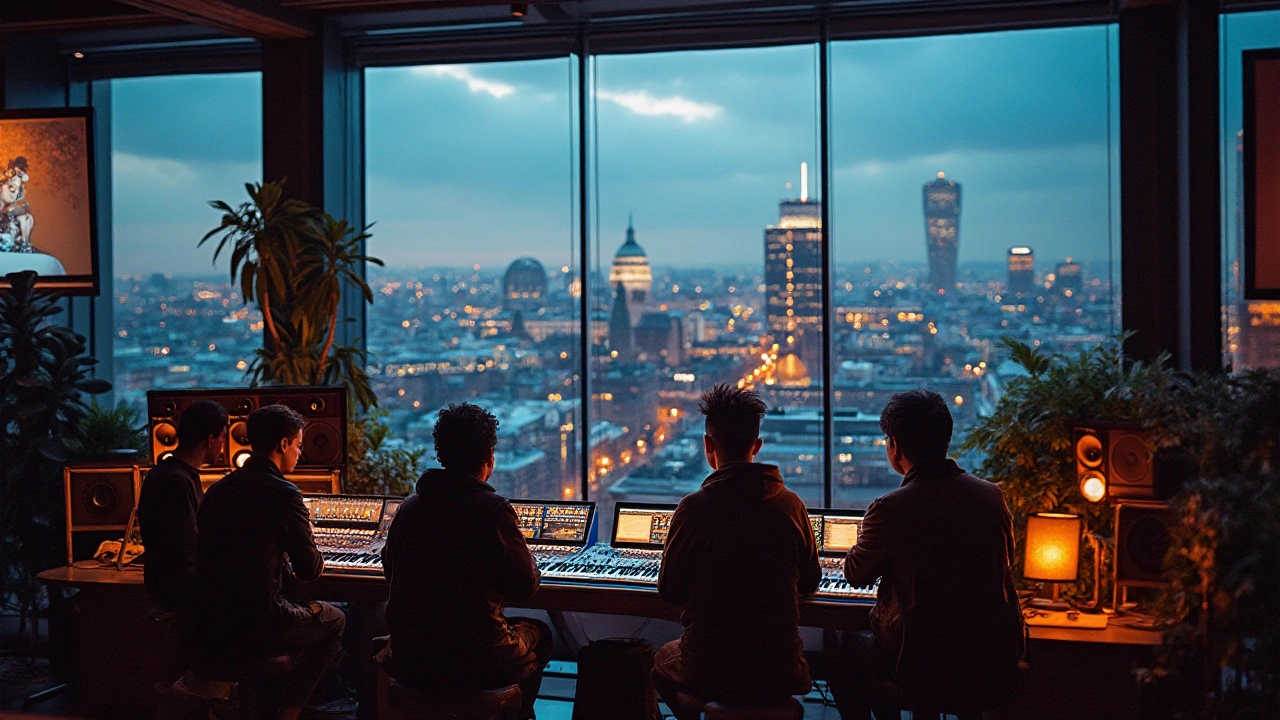
Impact on Music Production
The advent of electronic music has profoundly changed the landscape of music production. This transformation began with the introduction of synthesizers and drum machines into mainstream music in the late 1970s and early 1980s. Artists who once relied solely on traditional instruments found themselves with an entirely new range of sounds and voices at their fingertips. This newfound wealth of auditory possibilities empowered musicians to express themselves in unique ways that were previously unimaginable.
Producers quickly embraced these new tools, leading to the creation of iconic tracks that soon permeated popular culture. The accessibility of these technologies meant that music creation was no longer exclusive to those with formal training or access to expensive studios. Instead, anyone with a love for music and a bit of technical savvy could embark on their own creative journey in the realm of electronic music. This democratization of music production paved the way for a more diverse and innovative range of sounds.
Audio technology improved significantly in tandem with the rising influence of electronic music. Digital audio workstations (DAWs), like Ableton Live and FL Studio, came to the forefront, offering unprecedented control over every element of sound. These platforms enabled artists to experiment with intricate layers and textures, merging different genres seamlessly within a single track. The opportunity to manipulate every aspect from tempo to tonality within the digital space changed how music was both created and experienced.
As electronic music continued to advance, it brought with it an era of collaboration and boundary-pushing creativity. Producers began to venture into uncharted territories, blending styles and reimagining the role of technology in crafting music. According to renowned producer Brian Eno, "The beauty of electronic instruments is that they redefine the parameters of what's considered possible with sound."
"The beauty of electronic instruments is that they redefine the parameters of what's considered possible with sound." - Brian Eno
These advancements have also significantly impacted live performances. Artists like Daft Punk or The Chemical Brothers use cutting-edge technology to create immersive experiences that captivate audiences with both sound and visual artistry. The traditional line between studio production and live performance has blurred, allowing musicians to use the stage as a meeting point for both. The impact of electronic music on music production is undeniable, fostering a vibrant culture that continually pushes the boundaries of creativity and technological innovation.
Technological Advancements in Audio
The world of audio technology has evolved dramatically thanks to the pioneers of electronic music. Each innovation brought with it a seismic shift in how music was created, shared, and consumed. From early analog synthesizers to today's sophisticated digital workstations, the path of progress has been remarkable. The impact is visible not only in the music industry but also in our growing dependence on technology for audio experiences. Initially, electronic music was a playground for those daring to experiment with sound, creating new aural landscapes that traditional instruments couldn't offer. This exploration led to the creation of the synthesizer, an instrument that redefined music creation, enabling artists to produce previously unimaginable sounds.
The advent of synthesizers in the late 1960s and early 1970s introduced a form of music production that broke boundaries and set new standards. The iconic Moog synthesizer, for example, became synonymous with the evolving sound of modern music. These electronic marvels offered customizable soundscapes at the touch of a button. As time went on, the evolution of digital synthesizers meant that music makers could access an even broader palette of sounds. Eventually, technological advancements allowed for seamless integration of these instruments into studio setups worldwide. As a result, audio technology became a vital tool for so many musicians seeking innovation and creativity.
Digital audio workstations (DAWs) emerged as another groundbreaking innovation, giving musicians unprecedented control over their creative process. DAWs transformed laptops and desktops into fully functional recording studios. They democratized music production, allowing creators to produce high-quality tracks from the comfort of their bedrooms or home studios. The accessibility of such technology fueled a surge in independent music production, opening doors for talented individuals who lacked the means to book time in professional studios. Today, laptops equipped with DAWs can perform tasks that, decades ago, required entire rooms filled with expensive gear.
In recent years, artificial intelligence and machine learning have been added to the toolkit available to musicians and producers. They enable the creation of complex algorithms that assist with generating music, enhancing audio mixing, and even mastering complete pieces.
"The beauty of AI in music is that it takes away some of the barriers of technical expertise, freeing artists to focus purely on creativity," says an industry expert. This intersection of technology and music allows fresh opportunities for experimentation and diversification of sound, ensuring that electronic music remains a vibrant and integral part of the musical landscape.
The future promises yet more innovations as technology continues to advance at an astonishing pace. As devices become even more powerful and accessible, we can anticipate further breakthroughs that will transform the way we experience audio in its entirety. Whether it's through the enhancement of immersive experiences or the simplification of complex production processes, the role of electronic music will remain central to driving these advancements. As history shows, every leap in audio technology opens the door to new artistic possibilities, continually reinforcing the dynamic interplay between sound and innovation.
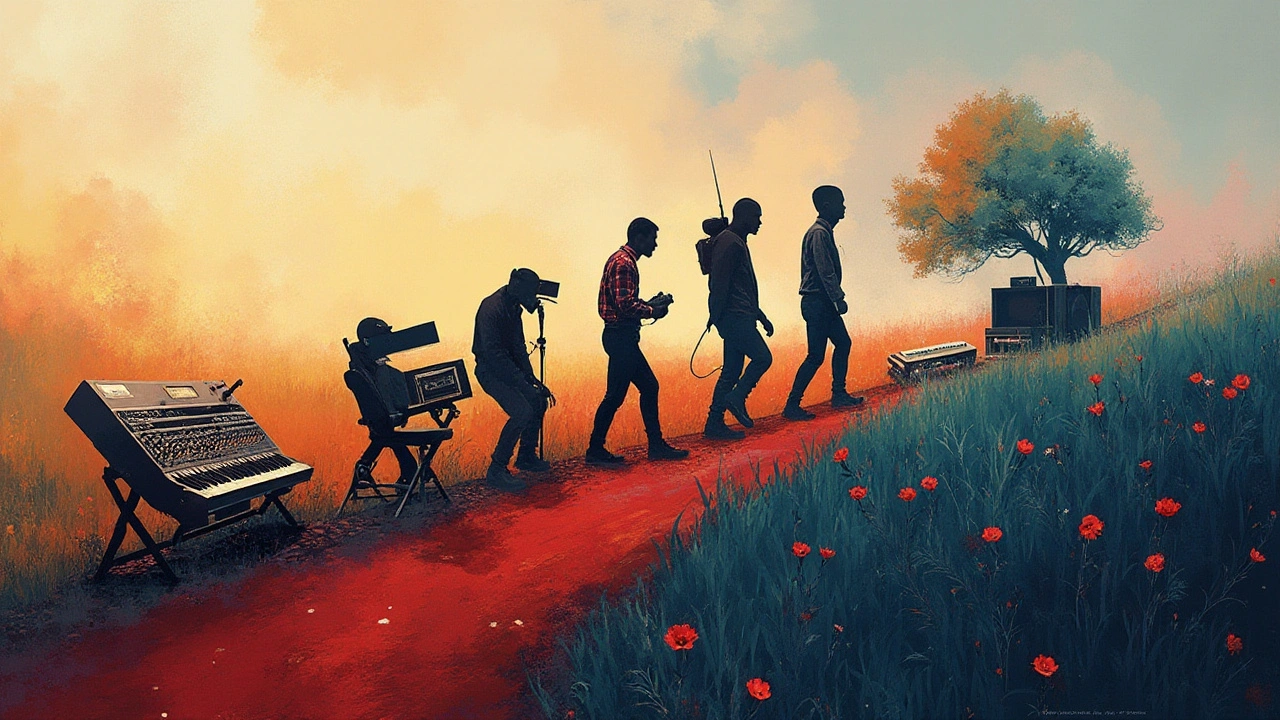
Future of Electronic Music and Technology
As we stride further into the digital age, the future of electronic music and its tandem march with audio technology becomes a thrilling symphony of innovation and potential. The integration of artificial intelligence with music composition is beginning to reshape how we think about creating sound. AI algorithms are not only generating novel compositions but also assisting musicians in exploring new sonic landscapes. This blending of human intuition and machine precision opens doors to musical possibilities that were unthinkable just a few years ago.
The expansion in virtual and augmented reality technology is also carving out new dimensions for electronic music. Imagine a concert experience that transcends physical boundaries, where sound can be felt and seen around you. This concept isn't far-fetched anymore, as more artists are experimenting with VR and AR platforms to create immersive performances that engage more senses than just hearing. As this technology matures, it promises to redefine live shows and home listening experiences, offering fans new ways to connect with music.
3D audio is another burgeoning field poised to transform how we perceive sound. By simulating a realistic auditory environment, 3D audio makes the sound feel like it's all around you. This technology is rapidly finding its place in gaming, films, and now music. The ability to manipulate sound in a spatial context allows electronic musicians to craft more engaging and layered compositions. As devices supporting 3D audio become more mainstream, it will lead to a resurgence in creative sound design and production techniques that enhance the listener's experience.
"Music is the shorthand of emotion, and with technology, we have the opportunity to write more intricate pieces," said composer and technologist Jaron Lanier.
With all these advancements, the tools available for music production are also becoming more accessible than ever. Online platforms now allow budding electronic musicians to create, mix, and distribute their tracks with just a laptop and an internet connection, democratizing the field and fostering a new wave of talent. The proliferation of digital audio workstations, many at no cost, has opened up music production to previously underrepresented voices, diversifying the soundscape with a multitude of styles and approaches.
As we look to the future, it's evident that the synergy between electronic music and audio technology will continue to blur traditional boundaries, leading to innovative creations and experiences. These advancements will not only shape the way music is made but also how it is shared and understood worldwide, breaking down barriers and creating new connections across diverse cultural landscapes.

